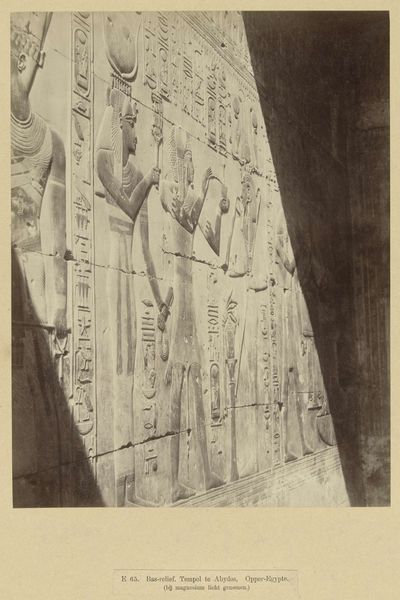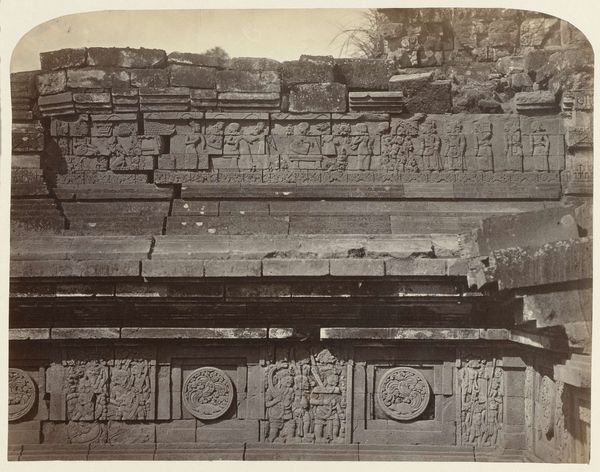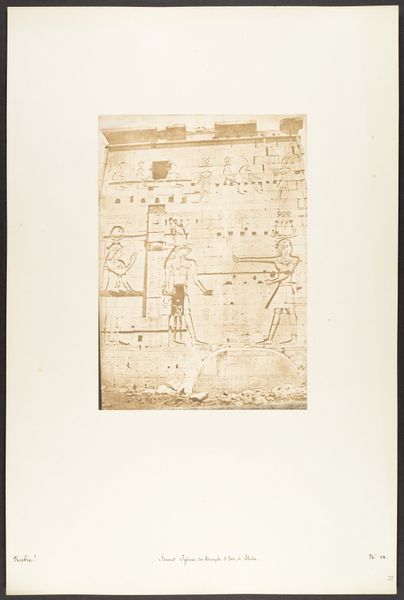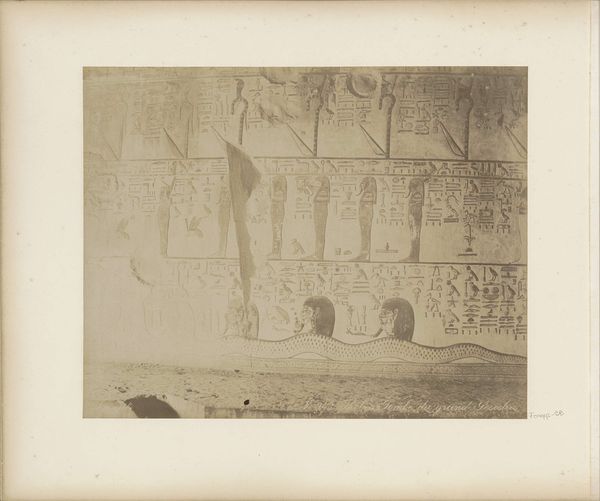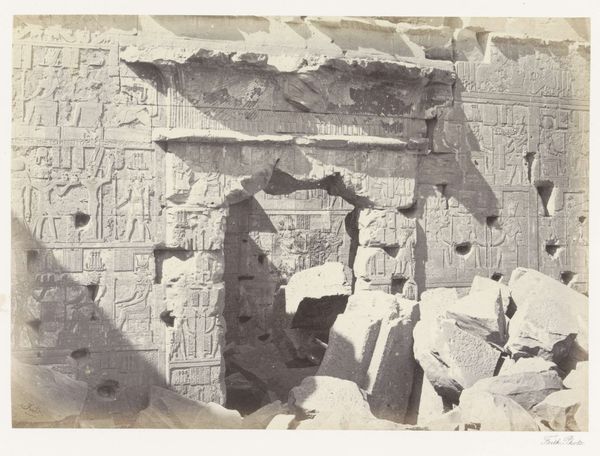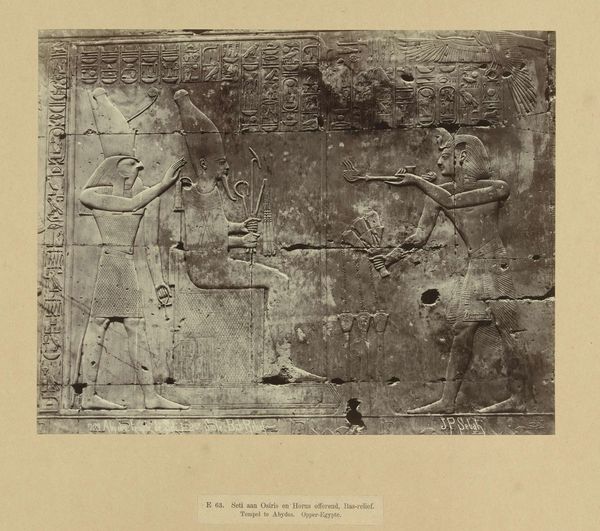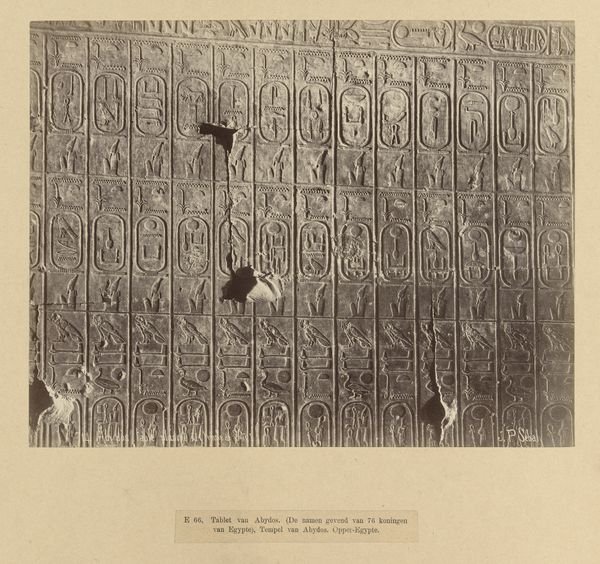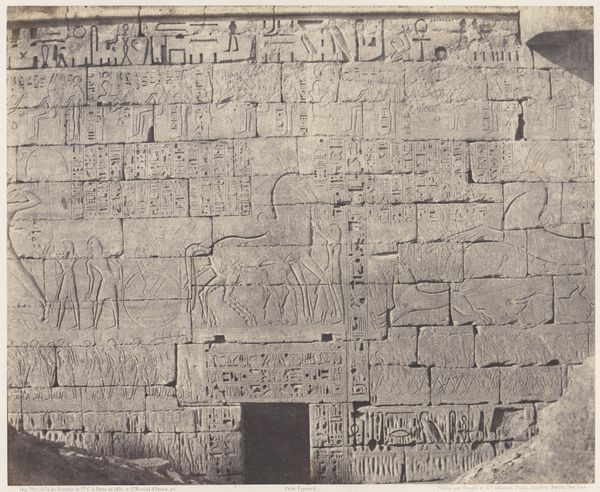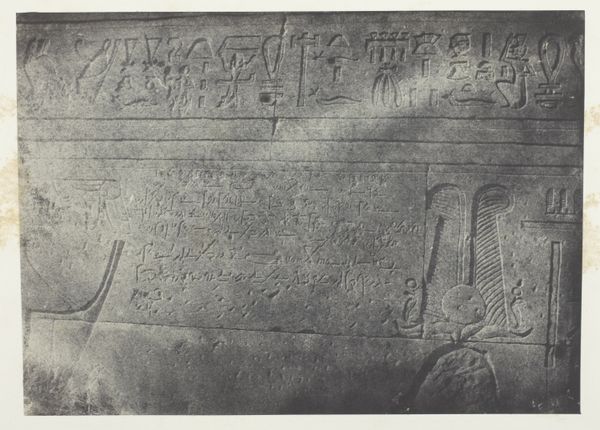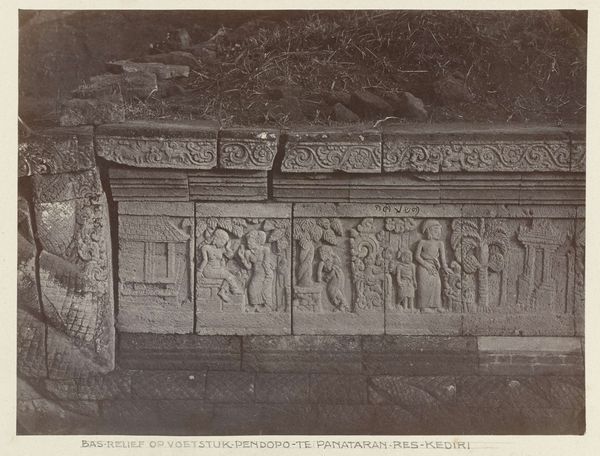
relief, photography
#
relief
#
landscape
#
ancient-egyptian-art
#
photography
#
geometric
#
ancient-mediterranean
#
history-painting
Dimensions: height 205 mm, width 261 mm, height 466 mm, width 555 mm
Copyright: Rijks Museum: Open Domain
Curator: Standing before us is a photograph titled "Hieroglyphen in de tempel van Kom-Ombos," or "Hieroglyphs in the Temple of Kom Ombo," captured between 1862 and 1895 by Antonio Beato. It is presently held in the Rijksmuseum collection. Editor: Wow, it feels like looking at a secret language, carved not just into stone, but also into time itself. There's something about the density of the hieroglyphs that feels almost overwhelming, like a whispered epic. Curator: Indeed. The photograph provides an intriguing glimpse into Egypt's Ptolemaic dynasty through the Temple of Kom Ombo. We see hieroglyphic relief carvings documenting not just language but dynastic power and religious significance. Photography played an important role here. It democratized access to these spaces. Editor: Democratized—interesting word for an empire! Jokes aside, the photographer seems less interested in accuracy and more focused on how these marks work aesthetically—the sheer density of geometric shapes against the worn texture of the temple...it makes the skin tingle! Does that count as historical context? Curator: It offers a visceral perspective that certainly complements a deeper analysis. It is imperative to remember that, for Western audiences of that era, such images promoted and perpetuated Egypt as an exotic location, a kind of colonialist gaze that this work occupies in relation to those reliefs. Editor: It's strange to think about how an image like this can be a doorway into something so immense, and also maybe a barrier? There's all this...stuff between me and whatever message or spirit the original carving carries, right? The distance of years, Beato's intentions, even just the glass of the photograph... Curator: And how museums decide which of these images of historical significance become publicly available—as cultural institutions—shapes a global perception about Egyptian history. The politics of representation is always at play. Editor: Still, the persistence of these images, those whispers...they make me hopeful that meaning finds a way through the noise. Curator: I agree that the artistic, archaeological record persists and retains its fascination precisely because of our innate curiosity about its secrets and its accessibility in art institutions across the globe.
Comments
No comments
Be the first to comment and join the conversation on the ultimate creative platform.
